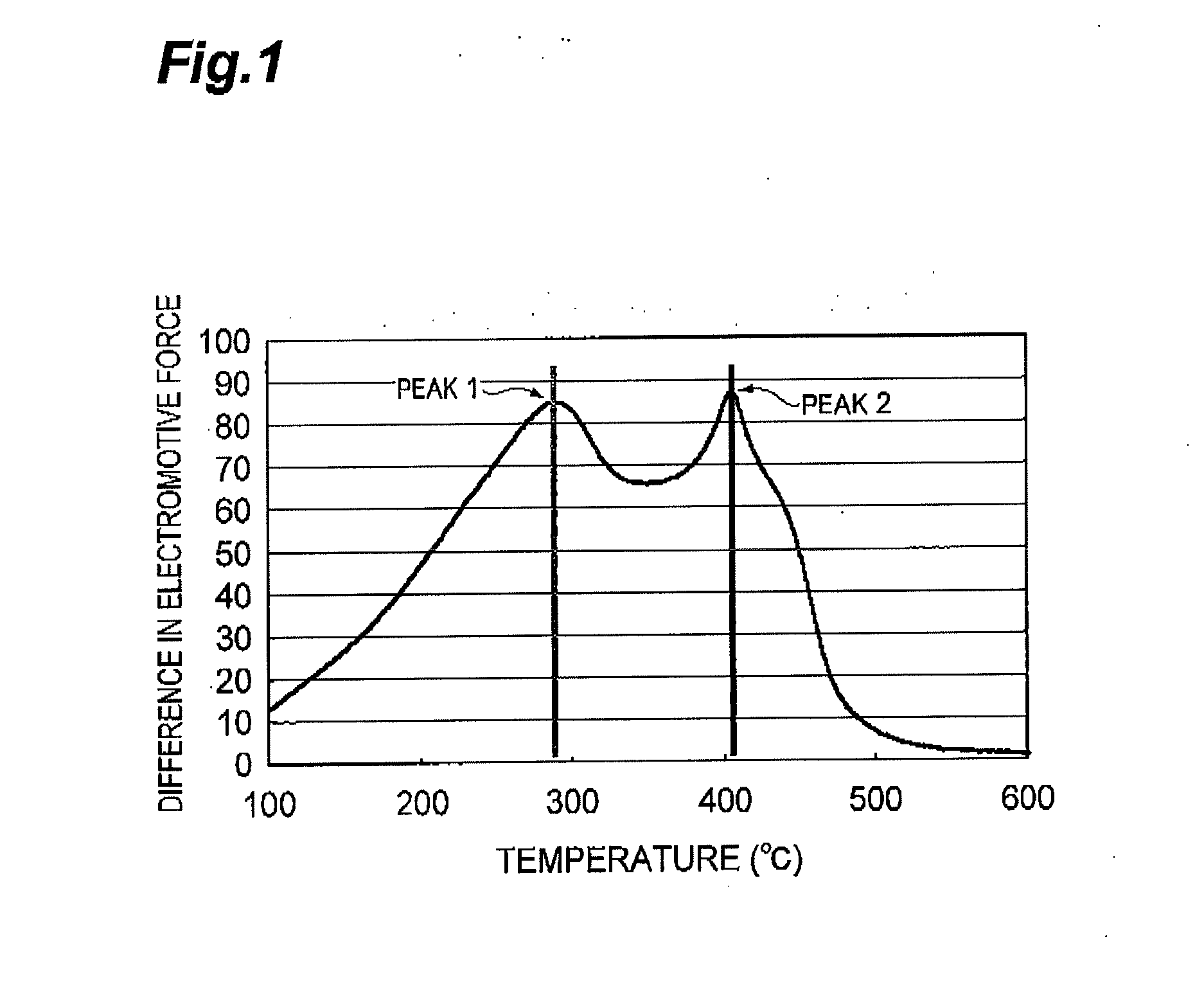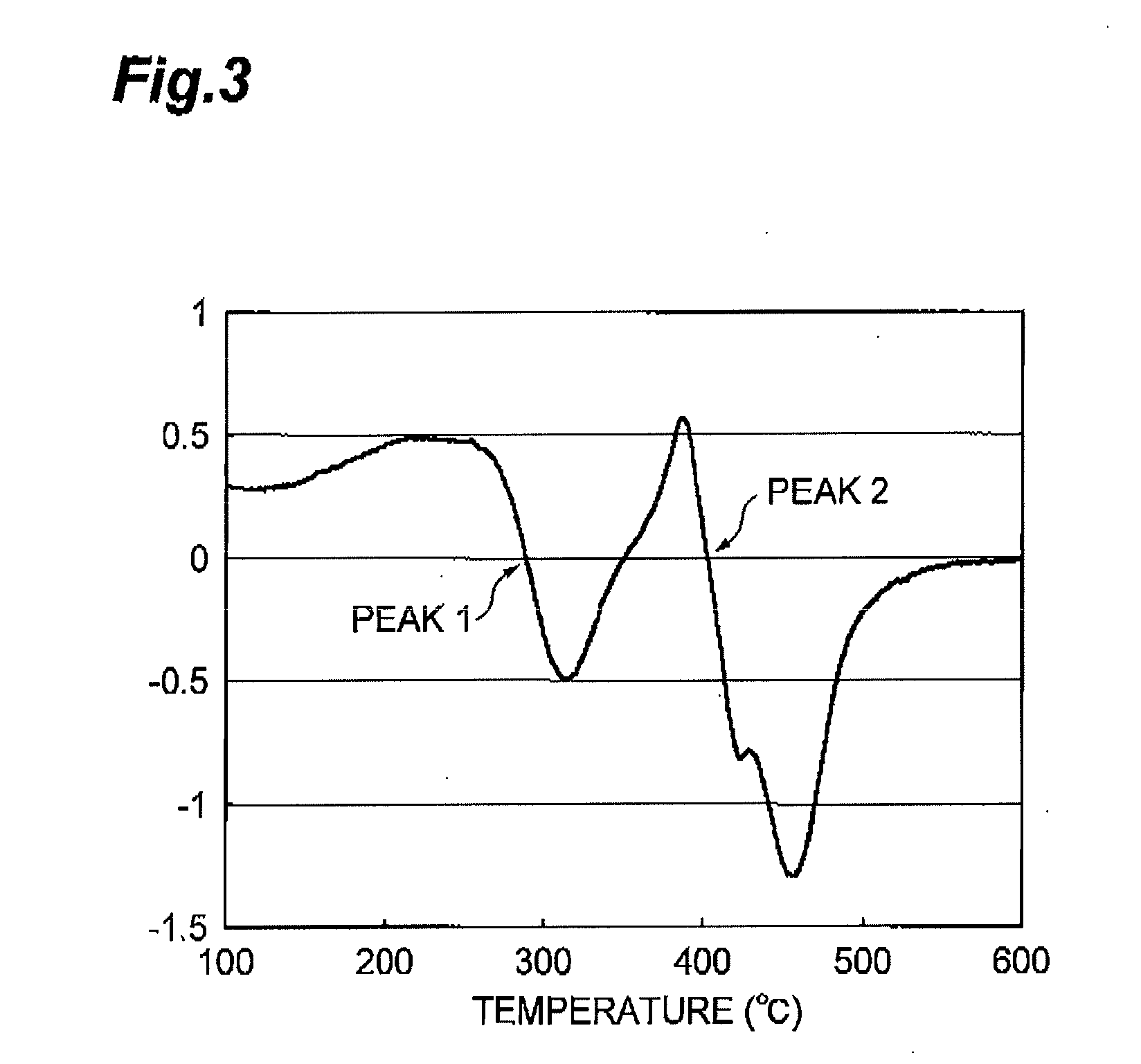Process for producing regenerated hydrotreating catalyst and process for producing petrochemical product
a technology of regenerated hydrotreating catalyst and catalyst, which is applied in the direction of physical/chemical process catalyst, other chemical processes, separation processes, etc., can solve the problems of increasing catalyst cost and waste catalyst amount, and achieves the effect of reducing cost, reducing waste catalyst, and reducing catalyst cos
- Summary
- Abstract
- Description
- Claims
- Application Information
AI Technical Summary
Benefits of technology
Problems solved by technology
Method used
Image
Examples
example 1
Regenerated Hydrotreating Catalyst
[0060]A spent hydrotreating catalyst 1 which was a catalyst containing molybdenum and cobalt as active metals supported on an alumina support and was pulled out after having been used in a hydrotreating facility for kerosene for two years was prepared. 5.139 mg of the spent hydrotreating catalyst 1 was measured out into a platinum pan, set in a differential thermal analyzer (Thermo Plus 2 series / TG8110 manufactured by Rigaku Corporation), and subjected to a differential thermal analysis with elevating a temperature of a sample from room temperature to 700° C. by 10° C. / minute at a flow rate of air of 100 ml / minute. Next, T1 and T2 were calculated by the aforementioned method based on the results of the differential thermal analysis, which revealed that T1=260° C. and T2=360° C. Deoiling was carried out by heating the spent hydrotreating catalyst 1 at 300° C. for 3 hours in a nitrogen flow having a flow rate per unit volume of the spent catalyst of 1...
example 2
Regenerated Hydrotreating Catalyst
[0063]A regenerated catalyst 2 was obtained by using the same spent hydrotreating catalyst 1 as that used in Example 1 and by carrying out regeneration by the same operation as that in Example 1 except that regeneration conditions were those shown in Table 1. The analysis results of a residual carbon content in the regenerated catalyst 2 are shown in Table 1.
[0064](Hydrotreatment Reaction)
[0065]A hydrotreatment reaction was carried out by the same operation as that in Example 1 except that the regenerated catalyst 2 was used. The results of specific activity are shown in Table 1.
example 3
Regenerated Hydrotreating Catalyst
[0066]A spent hydrotreating catalyst 2 which was a catalyst containing molybdenum and cobalt as active metals supported on an alumina support and was pulled out after having been used in a hydrotreating facility for a gas oil for two years was prepared. The spent hydrotreating catalyst 2 was subjected to a differential thermal analysis, which revealed that T1=310° C. and T2=410° C. Deoiling was carried out by heating the spent hydrotreating catalyst 2 at 400° C. for 3 hours in a nitrogen flow having a flow rate per unit volume of the spent catalyst of 15 NL / h·L-catalyst in an electric furnace. After that, a regenerated catalyst 3 was obtained by regenerating the deoiled catalyst at T2−10° C. for 5 hours in an air flow having a flow rate per unit volume of the catalyst of 50 NL / h·L-catalyst in the electric furnace. Quantitative determination of a residual carbon content in the obtained regenerated catalyst 1 was carried out by the aforementioned test...
PUM
| Property | Measurement | Unit |
|---|---|---|
| temperature | aaaaa | aaaaa |
| temperature | aaaaa | aaaaa |
| flow rate | aaaaa | aaaaa |
Abstract
Description
Claims
Application Information
 Login to View More
Login to View More - R&D
- Intellectual Property
- Life Sciences
- Materials
- Tech Scout
- Unparalleled Data Quality
- Higher Quality Content
- 60% Fewer Hallucinations
Browse by: Latest US Patents, China's latest patents, Technical Efficacy Thesaurus, Application Domain, Technology Topic, Popular Technical Reports.
© 2025 PatSnap. All rights reserved.Legal|Privacy policy|Modern Slavery Act Transparency Statement|Sitemap|About US| Contact US: help@patsnap.com



